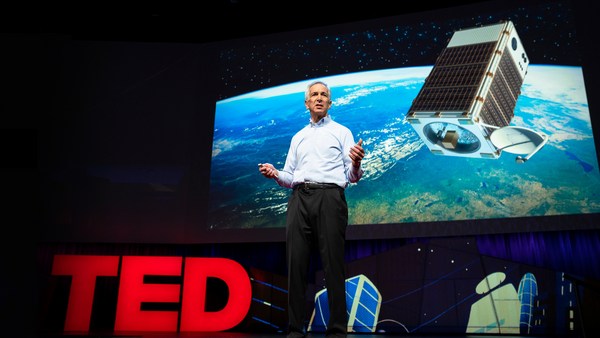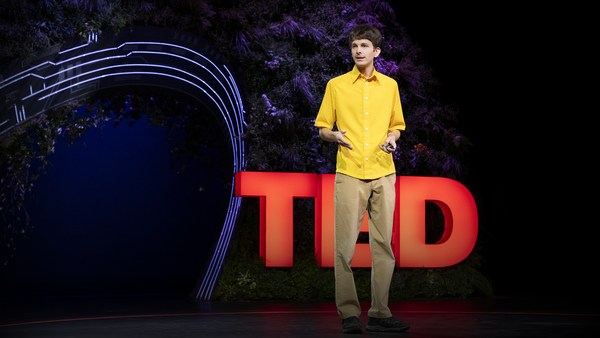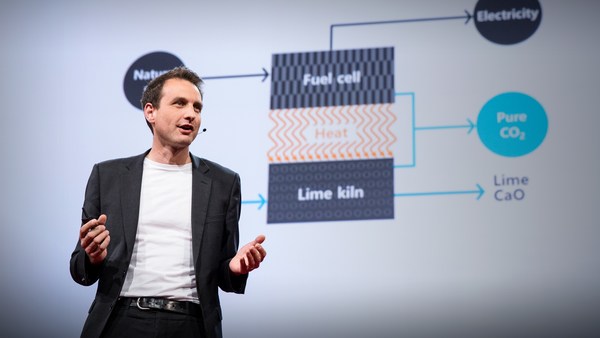In the time it took me to walk on stage around 10 seconds, more than 10,000 metric tons of climate-warming gases have been pumped into the atmosphere from human actions. To provide some context on just how much that is, That is the weight equivalent of 170,000 of me emitted in gas in 10 seconds.
Ninety-nine percent of this pollution is carbon dioxide, CO2, and we know we need to reduce it. The other one percent is almost entirely methane, which mostly comes from producing fossil fuels, managing waste and raising livestock. But that one percent of methane could cause more warming over the next 10 years than all that CO2. This is because methane absorbs a lot more energy per unit mass for reasons relating to its molecular structure and its ability to form other greenhouse gases in the atmosphere. CO2 is important because it can linger in the atmosphere long after it is emitted, which means we must achieve net-zero emissions to eventually stabilize our climate. This is key for protecting generations to come.
But with climate change already devastating so many lives today, we can't focus only on the distant future. My work as a scientist aims to identify ways to slow down warming as fast as possible, so that we can lower the risks of worsening damages in the near future. This is where methane comes in. That one percent of methane may cause more warming than all that CO2 in the next several years, but it only lasts in the atmosphere for around a decade. Methane's warming power is therefore not from the gradual buildup over time like CO2, but almost entirely from recent emissions. This means that every time we reduce methane, we can reduce a lot of warming right away.
In fact, cutting methane is the single fastest, most effective opportunity to immediately slow down the rate of warming.
(Applause)
And this is because not only does methane act fast, but because we can act fast because we have the technologies available right now to cut methane emissions from human activities in half. And even better, many of these solutions pay for themselves.
The methane we emit comes from three main sources: energy production, waste management and agriculture. The first category, energy production, is the largest and cheapest opportunity we have to cut methane today. Most methane from energy isn't from burning fossil fuels, it's from producing fossil fuels. Because natural gas, which is mostly methane, can easily escape into the atmosphere when extracting oil, gas and coal, or when transporting gas through pipelines. In fact, these leaks can completely offset any near-term climate benefits of using gas instead of coal. But we have the technologies to cut the majority of these emissions with around half for no net cost because the saved gas can be sold.
For example, oil fields in West Texas are wasting enough gas right now to heat more than two million homes. Fixing the methane problem, though, can be as simple as tightening a valve or placing a gasket or tuning an engine. A major reason why these easy fixes haven't been implemented isn't the cost. It's because governments and industry have been data-deprived, lacking information on where and how much is emitted. But our ability to detect these leaks has rapidly advanced in recent years. Everything from handheld instruments to sensors on aircrafts and drones.
And now there's a growing universe of satellites designed to locate and measure methane from space. That list includes MethaneSAT, which is expected to be launch-ready next year and will be able to detect and quantify methane emissions across the globe with unprecedented precision. If we can find it, we can fix it. This part is not rocket science. It's more like plumbing. I can't tell you enough how hopeful that makes me for the future.
We can also reduce a lot of emissions from the second category, waste management, where methane is produced as bacteria decompose, garbage in landfills and sludge in wastewater. Some of the largest landfills receive enough trash per day to fill more than 10 Olympic-sized swimming pools before it is compacted. But we can suck up the methane from landfills by using tubes with vacuums and then use it to generate electricity, because methane is an energy-packed fuel. We can also reduce emissions by sending some trash, like food waste, away from landfills and instead to composting centers that are designed to prevent the release of methane.
The third category, agriculture, emits the most and remains the hardest to address. But there are exciting new technologies on the horizon. The number one source is livestock. Some farm animals, like the billion-plus cattle worldwide, belch methane that was produced when digesting plants like grass. Reducing these emissions is possible with higher-quality feed. And the scientists are developing and testing new technologies, like feed supplements, that can suppress methane production in a cow's gut by at least 30 percent with no negative effects on productivity or quality. Livestock manure can also produce methane when concentrated, but we can cover manure lagoons and then pump manure into digesters that can capture the methane, which can then be used for heat and electricity. Another methane source is rice production. This one crop is a staple for half the world's population, but the plants grow in flooded fields that create ideal conditions for microbes to form methane. We can slash emissions from methane by improving how we manage the required water, which can be as simple as maintaining a shallow level of water in the rice fields.
Implementing all of these solutions will take work. But people have already started to act. Many governments, oil and gas CEOs, landfill operators and farmers are advancing measures to reduce methane. But we need more, because there is a lot of warming that we can prevent if we quickly deploy the full set of affordable and available strategies. We need standalone methane targets as part of every company's business model, and every country's nationally determined contribution as the Paris Agreement is strengthened. Because if we succeed in a rapid, full-scale effort to cut methane, we have a chance to actually experience the benefits fast, in our lifetimes.
For example, my colleagues and I found that we could slow down the rate of warming by as much as 30 percent before mid-century. This would help communities and ecosystems adapt to a changing climate and hit the brakes on worsening extreme events, like wildfires in the Americas and Australia, and flooding in Europe and Asia. It would also help clean up our air, saving lives and crops, because methane contributes to ozone pollution. And because some of the people most vulnerable to the impacts of climate change are on the front lines of methane emissions. These solutions can also help reduce the inequity of climate change, for example, by job creation.
If we fast-forward to later decades, acting now to cut methane can also help protect Arctic sea ice. This is because when methane reductions are combined with strong actions to cut CO2, it becomes unlikely that temperatures would rise to levels that would trigger a total loss in Arctic summer sea ice. This is important not just for polar communities and ecosystems, but actually for the entire world.
I've now been talking for almost 10 minutes, which means that more than 700,000 metric tons of climate-warming gases have been pumped into the atmosphere. Now that equals the weight of 12 million of me. Of all this pollution, it is the methane that could warm the Earth the most over the next 10 years. But we know how to cut these emissions in half right now from energy, waste and agriculture.
This is the methane moment. Because cutting methane is the single fastest, most effective opportunity to reduce climate change risks in the near term. And cutting CO2, which will otherwise build up over time, is the key to reducing risks in the long term. We need to do both to plot a safer course for ourselves and our children and for generations to come.
Thank you so much.
(Applause)





